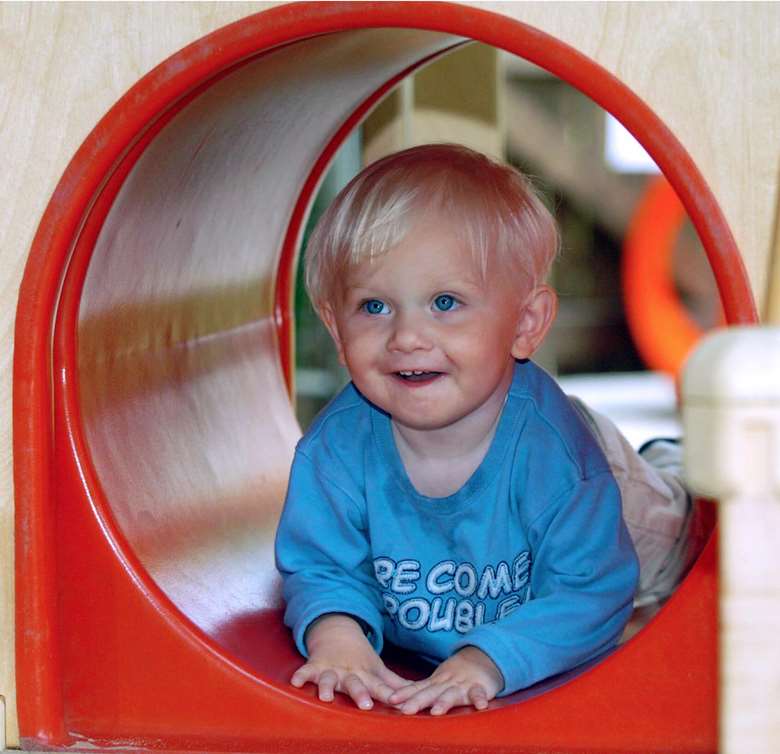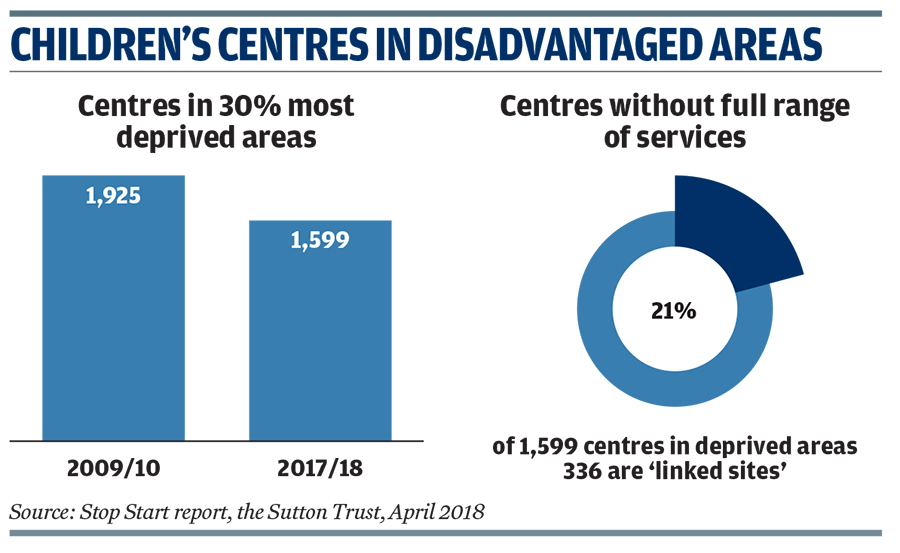Mapping children's centre cuts
Neil Puffett
Tuesday, May 29, 2018
Experts challenge minister's assertion that poorest areas have not seen children's centres closed.

Children's minister Nadhim Zahawi prompted controversy last month when, appearing before the science and technology select committee, which is conducting an inquiry into evidence-based early years intervention, he made the claim that children's centres are not being closed in the most disadvantaged areas. Instead, councils are using centres differently, and getting better outcomes, Zahawi added.
The fact that there have been children's centres closures on a vast scale is not disputed. Last month a report by the Sutton Trust titled Stop Start, calculated there are now 1,000 fewer children's centres than in 2009, although about half of these buildings still provide some form of service.
However, where closures have taken place and who they affect is contested. Three experts assess the evidence and give their views.

Minister's claim not supported
By George Smith, associate fellow, University of Oxford and lead author, Stop Start report
The minister confirmed to the committee the importance of children's centres to the government's early education and social mobility strategies. But we were surprised to hear him state twice (with emphasis) that "the overall number of children's centres in disadvantaged areas nationally has stayed static; it has not decreased in any way".
Published in April 2018, Stop Start shows what has happened to children's centres. The "headline count" shows the overall number dropped from 3,632 centres in 2009/10 to 3,123 in 2017. The programme focused initially on the 30 per cent most disadvantaged areas, and at its peak 54 per cent of all centres were located in these areas; by 2017 this had dropped slightly to 52 per cent.
However, the actual number of centres in disadvantaged areas had fallen from 1,925 in 2009/10 to 1,599 by 2018 (down 17 per cent).
Importantly, 336 of these centres in disadvantaged areas were now "linked sites" rather than full children's centres. Stop Start also concluded that national figures lag behind closures announced locally, and that additional large scale closures are in the pipeline.
These DfE figures do not support the claim that centres in disadvantaged areas have been "sheltered" or numbers have remained "static".
Earlier this year, the National Audit Office, using DfE data, revealed that between 2010 and 2016 spending on Sure Start fell by 50 per cent.
Focus must be on targeted services
By James Hempsall chair of charity Children's Centre Leader
In the early years of Sure Start and children's centres my only concern was about how the resource was being used and how our collective energy was being spent. I'm not a fan of model-first approaches, and there was too much emphasis then on getting buildings built, reaching every community, and the practicalities around the delivery, management and sustainability of a myriad of services.
There was too much of a benevolent service provider culture, and not enough of working with families in centres, in the home, and across other service delivery points (including childminders and other early years settings).
This distracted many from the real task in hand - the integration of services, and reaching out to the most excluded and disadvantaged families.
We are being told children's centres remain in the most disadvantaged areas. I don't know this for certain as I haven't collected data on this.
However, in my experience, as councils have examined their stock of children's centres and made local decisions about their funding and how it is best used, they have sought to ensure services are retained where they are most needed to address particular issues.
I would like to see more impactful and resourced children's centre services that can offer targeted services, without stigma, to families in disadvantaged areas and have the ability to lead preventative early intervention in wider areas for all families too.
Early help needs more funding
By Stuart Gallimore, president, the Association of Directors of Children's Services
The services provided in children's centres are key to ensuring vulnerable children get a better start in life and families can access support.
Reductions in funding have made it necessary for local authorities to find innovative ways of reshaping services, working closely with our partners to do this. Provision varies from place to place and may include community groups running centres from libraries; being attached to a health clinic; or a "hub and spoke" arrangement. Meanwhile, many areas are integrating health and youth services into the children's centre - providing services for 0-19 year olds. In my own local authority, we are doing more outreach work focussed on the most disadvantaged families.
We should be having a much wider conversation about investment in early help and preventive services, that we know can prevent the escalation of need to crisis point, as opposed to children's centres in isolation. The Early Intervention Foundation estimates the annual cost of late intervention to be £17bn, but the human costs are much greater and can have a lasting impact on generations of families.
As budget pressures continue to intensify, our ability to invest in these vital services is being lost without a commitment from government to adequately fund early help and prevention. Reducing these services hinders local needs being met in a timely way, leading to longer term cost implications for every local authority.




